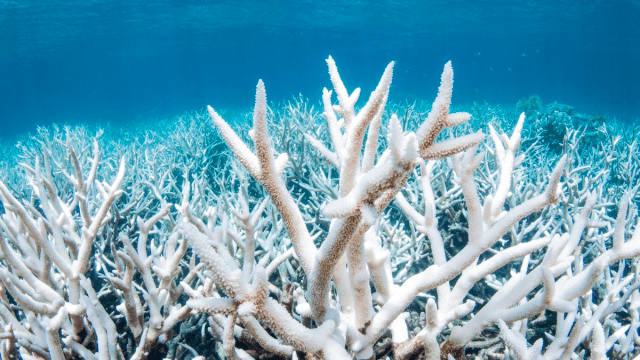The bleaching of the Great Barrier Reef is one of the most upsetting examples of how climate change is wreaking havoc on the natural wonders of our planet. But research from the Australian Institute of Marine Science (AIMS) indicates that some parts of the coral reef currently have the highest coral cover since record-keeping began nearly four decades ago.
As ocean waters warm, the Great Barrier Reef has suffered repeated mass bleaching events, leaving scientists and the public fearful for the future of this massive and biodiverse reef system. The reef, which covers about 344,000 square kilometres, sits off the northeastern coast of Queensland and is home to many endangered marine species. When the seawater heats up above average, corals expel the algae responsible for their vibrant colour. Bleached coral can recover, but the reef may be weakened and more susceptible to damage and disease.
In some rare good news, new data shows how resilient the troubled ecosystem can be. Scientists with AIMS, a government research agency, report that the level of coral covering the seafloor in the central and northern parts of the Great Barrier Reef is at the highest it’s been in 36 years, which is when record-keeping began.
“Every summer the Reef is at risk of temperature stress, bleaching and potentially mortality and our understanding of how the ecosystem responds to that is still developing,” said Paul Hardisty, CEO of AIMS, in a press release. “The 2020 and 2022 bleaching events, while extensive, didn’t reach the intensity of the 2016 and 2017 events and, as a result, we have seen less mortality. These latest results demonstrate the Reef can still recover in periods free of intense disturbances.”
The southern section of the reef, however, appears to still be struggling, as the scientists recorded a decline from 38% average coral cover in 2021 to 34% in 2022. According to AIMS, the southern region is being damaged by outbreaks of crown-of-thorns starfish, which eat corals.
Scientists surveyed 87 reefs across the northern, central, and southern parts of the Great Barrier Reef between August 2021 and March 2022 as part of their Long-Term Monitoring Program. For these most recent surveys, AIMS measured the percentage of the seafloor covered by hard coral using manta tow surveys, in which a scuba diver is pulled behind a boat while conducting a visual survey of the reef. When comparing these new data with the historic data, AIMS scientists found that the northern and central sections of the Great Barrier Reef have the largest percentage of hard coral cover — 33% and 36%, respectively.
While these results are exciting, the Great Barrier Reef is hardly out of danger. Just as a cool week during the summer doesn’t negate overall trends in global warming, a boost in coral cover this year could easily be wiped out by another mass bleaching event.
